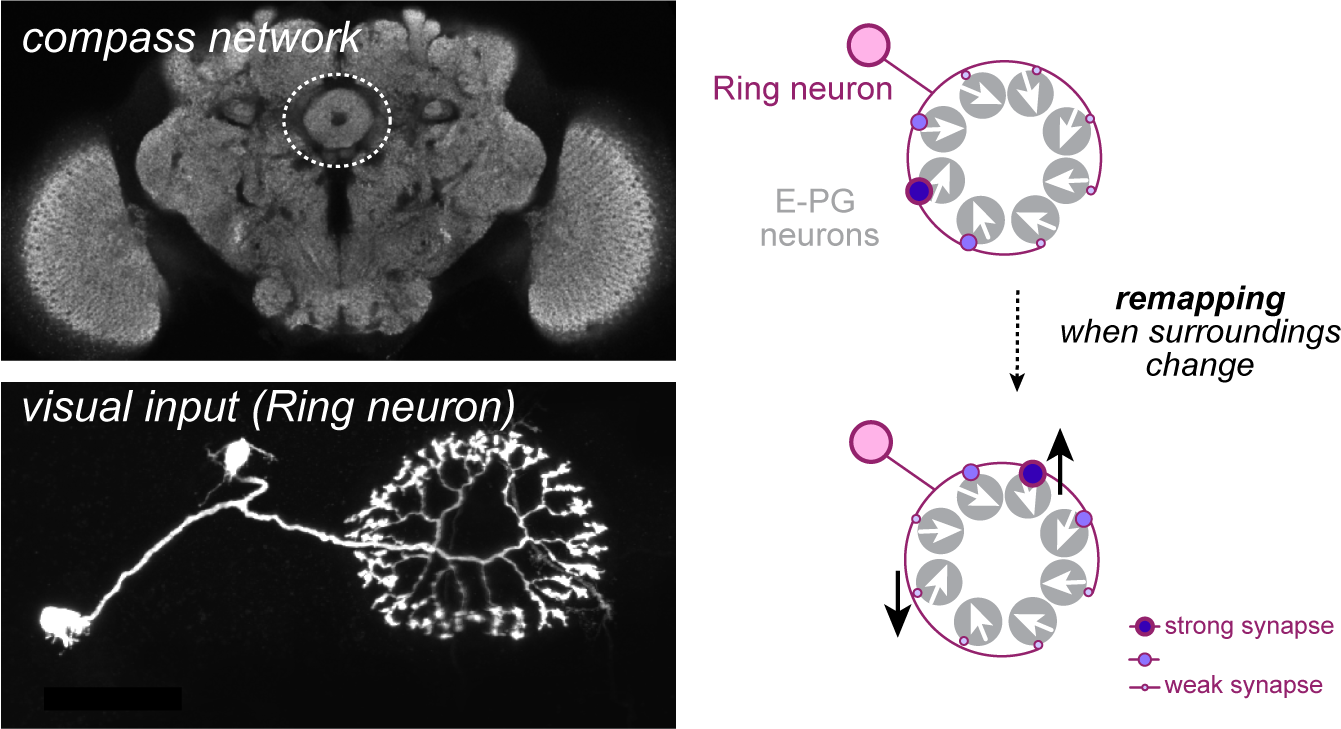How do we flexibly maintain a coherent sense of direction?
To maintain a sense of direction, our brain tracks our body’s movements as well as surrounding landmarks. However, these signals can change: a prominent landmark might disappear behind a cloud, or a chronic leg injury can alter the amount we move with every step we take. How does the brain construct and maintain a coherent sense of direction that flexibly accommodates such changes?
The goal of our research is to use navigational circuitry to understand how neural circuits perform different computations under different conditions. We explore this question in the fruit fly, Drosophila melanogaster. Many insects are expert navigators; the circuits that hold the fly’s internal compass have been recently identified within a brain region that is highly conserved across insects.
By combining the fly’s advanced genetic toolbox with accessibility to in vivo electrophysiology and 2-photon imaging during behavior, we explore how real-time changes in synaptic physiology, intrinsic excitability, and circuit dynamics enable the fly’s brain to form a sense of direction under varying conditions.
Current Projects
How does synaptic plasticity shape spatial representations?
It remains a challenge to directly relate changes in synaptic connections to the emergence of spatial memories. Our previous work suggests that within the fly’s compass network, Ring→E-PG synapses store the mapping between sensory cues and heading direction. We use in vivo electrophysiology, genetic manipulations, and virtual reality during 2-photon imaging to directly relate synaptic changes to the formation of new spatial memories. This multi-faceted approach will allow us to understand how the precise logic of synaptic plasticity shapes learning during exploration.
How does context shape our sense of direction?
Navigational circuits experience different constraints depending on context. For example, we have different expectations about our upcoming movements through the world when riding a bicycle versus walking slowly. In this project we explore the hypothesis that distinct neuromodulatory systems serve to switch the compass network into different operating modes depending on context.
How are the population-level properties of neural networks maintained?
The leading hypothesis for how information is held “in mind” during short-term memory is stably maintained neural activity. Within the ring-shaped compass network, the location of a “bump” of persistent neural activity stores a representation of the fly’s current heading direction. This means that in order to properly store information about which direction the fly is facing, the network must be balanced such that each location around the ring is equally favorable–this balance would be disrupted if the properties of individual neuronal elements ever changed. We are exploring how homeostatic regulation of single-cell synaptic and intrinsic properties shapes the compass network over the fly’s lifetime.
Funding
Thank you to the generous sponsors of our research









